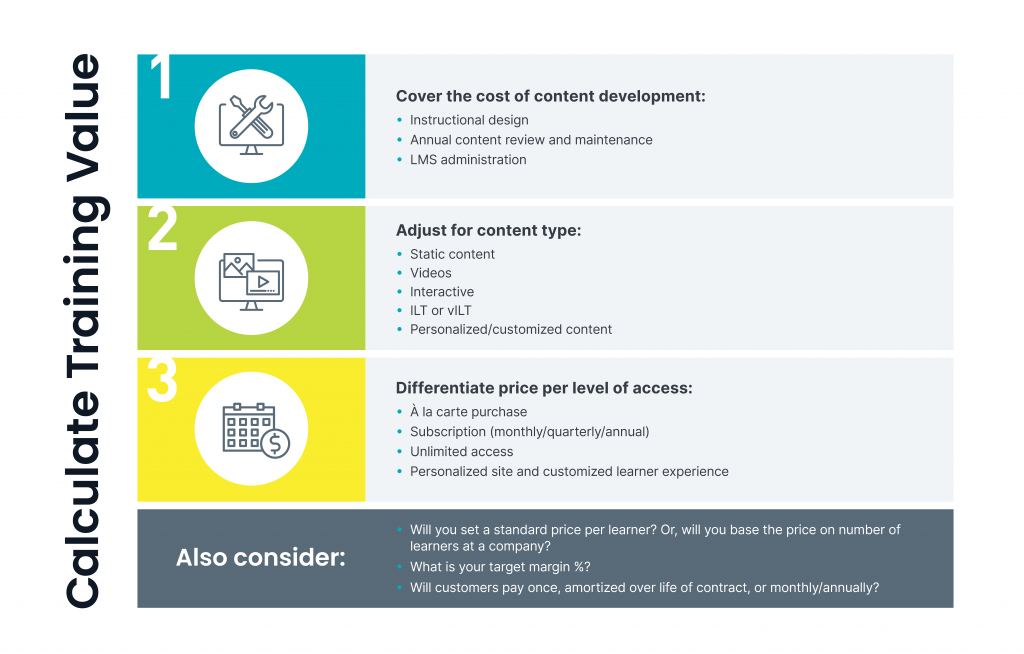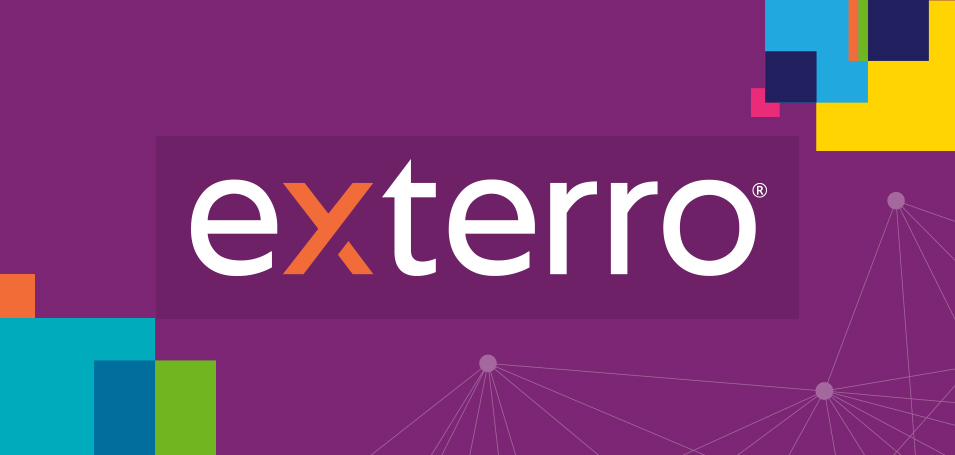When I joined Charles River Development, I was tasked with kicking off the digital transformation of the education services program. Training was solely instructor-led (ILT) and purchased by the day. I knew there was more flexibility with an online format, and we could be more accessible and diverse in the training we provide. In short, we could offer a lot more value to our customers.
Part of this transition was understanding how we were going to price online training compared with in-person classes. If you’re at this stage, you need to ask yourself: what is the purpose of education within your business? For some, the answer is revenue. For others, there is no revenue component at all. The educational services of the company is a cost-center, more focused on client satisfaction or attrition. (Of course, these are also revenue-focused if you take a long-term view.) For us, direct revenue was an important piece of the puzzle. I knew we needed to build a pricing model that helped us with that goal.
Here’s how we developed our training pricing model at Charles River Development.
The Evolution of Pricing and Packaging
Knowing the cost of training was a barrier to our clients, we knew we had to evolve the pricing model, especially as we moved to a digital offering. We saw that customers didn’t want to pay for training once they had already paid for the product. When training was an additional line item, it was the first thing to go.
Why not roll the training into the cost of the contract as additional value included with the product offering? Customers could increase the number of learners or the amount of training for an additional fee, but they couldn’t remove that initial training — it was part and parcel of the contract.
When we looked at the data, we found something incredible. In the first year, 80% of customers who took that initial training returned to pay for more training à la carte. This includes adding additional learners, or upgrading to a higher tier of training. Once it was part of the contract, users saw the value and came back for more.
The implementation team provided valuable feedback about these trained users, compared with those who hadn’t engaged with training. Trained clients knew about the product capabilities, were better equipped for conversations, asked the right questions, and provided integral input during the implementation phase. This reduced the time it took to problem solve and implement the system. Ultimately, it significantly saved resources both internally and for the clients.
Defining “Fair Pricing” and Advocating for Value

At the forefront of all conversations around pricing was one key question. How could we make the cost of training fair? This meant fair to the client, and also fair to the business. I could pluck a set fee out of the air for training, but how fair is that? We needed to think about how much it costs to create the content, deliver it, pay for LMS license fees, and continually update the material.
As I was gathering this information, I thought, I don’t want to nickel and dime our users. At the same time, I needed to determine the minimum to charge to cover our costs.
To reach a compromise, I can’t overestimate how important it is to connect with your Finance team and understand the data. Get a view of how much each type of content costs, whether it’s ILT or self-paced. For instructor-led, how much is the average hourly rate for an instructor? What are the costs to set up the environment? If the training is on-location at the client’s site, what’s the travel time involved? With self-paced training, do the same. On average, we’ve found it takes 50 hours of instructional design and development resources to create 1-hour of eLearning. All this needs to factor in so your team can cover these costs, plus achieve some profit.
With an understanding of the costs to create, deliver, and update training, we built a new approach to our training pricing model.
Data Sells
I always say, lead with the data. I already knew that those who were training consistently came back for more. And those trained clients are better equipped for productive conversations with implementation teams. This information told me that training was providing ROI.
Now that every client had some training as part of their contract, we could provide different levels of training. (And offer the opportunity for clients to upgrade.) We created three tiers, and found many businesses upgraded, or added more learners to the standard package. I had the data to show that trained users find value and purchase more. I could frame additional training as a win for everyone. We now had better educated users who could better participate in implementation and use the system at a deeper level. By this point, we had rolled out our online academy on Thought Industries. This meant we could scale our training on-demand without the expense of more instructors.
One example of what we can do digitally using Thought Industries is offer hands-on experiences via a Skytap virtual environment. While this is only available for a higher tier, we do include one course that’s hands-on with the standard tier. This allows us to show clients what’s included in the next tier, showing them the value of a potential upgrade within the training pricing model.
On the back end, I use data to create a monthly report on what we’re delivering and to showcase our training revenues. As training is included with the contract, we do get a carve out from that cost which contributes to our revenue goals. And, all à la carte and training upgrades invoice directly to educational services, too. I track everything, including the source of the revenue. It’s so important to be able to tell the right story, and data is what helps to do that.
Data, Customer-Centricity, and Collaboration: The Route to Smart Pricing and Value
A mature educational services function within the business understands how to meet organizational goals, whether that’s attracting direct revenue, boosting client satisfaction scores (CSATs), or encouraging more educated users.
Right-size pricing is a critical part of the digital transformation journey, as customers need to feel that they are getting value with on-demand learning, without costing the business behind the scenes. Tracking the data to measure impact and engagement is crucial, as without being able to prove ROI, you simply won’t get buy-in for your vision.
When shaping a successful pricing and packaging model for training programs, my closing advice is to:
- Consider how you structure fee vs. free training to show learners the value of your offering,
- Collect the right data to uncover the impact of that training, and
- Collaborate with internal teams to make sure you can accurately measure and exceed your own revenue goals.
About the Author
Julie Cochrane, M.Ed. is the Vice President Global Educational Services at Charles River Development, a leading provider of technology systems and services to investment firms. Julie brings 15+ years of experience in financial, FinTech and MedTech industries specializing in leading teams to create and transform organizational and customer learning experiences that cater to in-person, hybrid and remote audiences.



